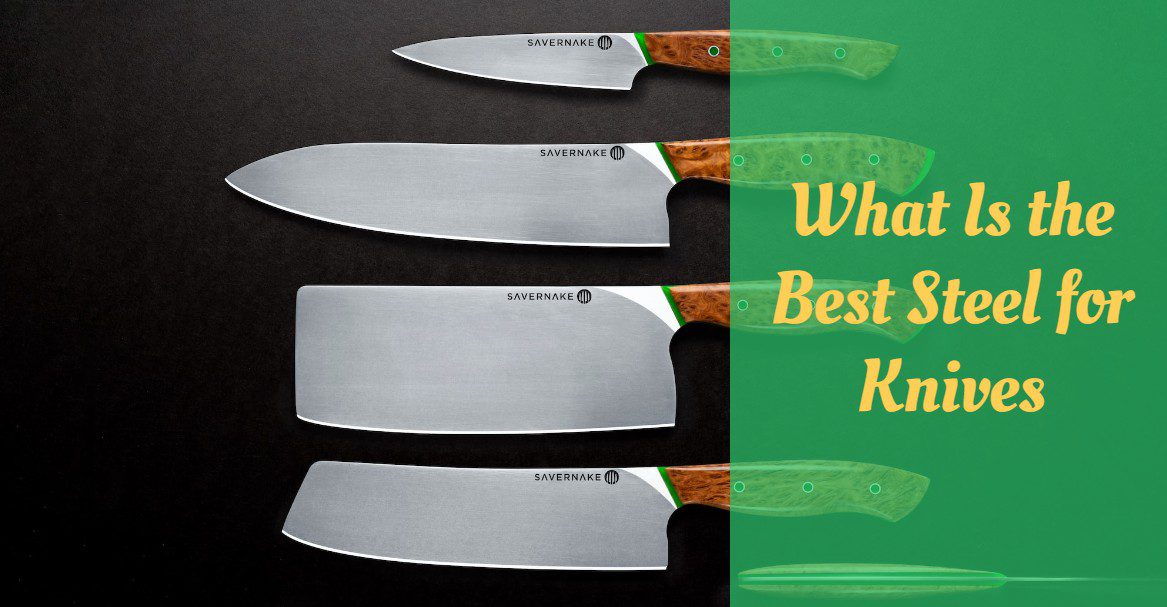While producing knives what defines whether the product will be good is the material used. Of course, there are some other important factors, including design and manufacturing methods, but it is the type of metal that sets the level of knife performance.
Steel in general is an alloy, a mixture of carbon and iron. Some other elements can be added to enrich the contents and to improve the blade’s characteristics and performance. Such elements include silicon, sulfur, phosphorus, manganese, etc.
You may also like: 7 Best Richardson Sheffield Kyu Knives Reviews
WHAT QUALITIES TO EXAMINE WHILE CHOOSING STEEL FOR KNIFE MAKING?
As we have already mentioned, the contents of steel may vary greatly. On the other hand, it’s not that hard to estimate the performance and the quality of steel since it boils down to five crucial features:
HARDNESS
Hardness is the resistance to scraping, abrasive deformation, and cuts. When speaking about the steel used for knife production, the parameter of hardness is strongly connected to strength and can be precisely measured by a standardized method of Rockwell C scales.
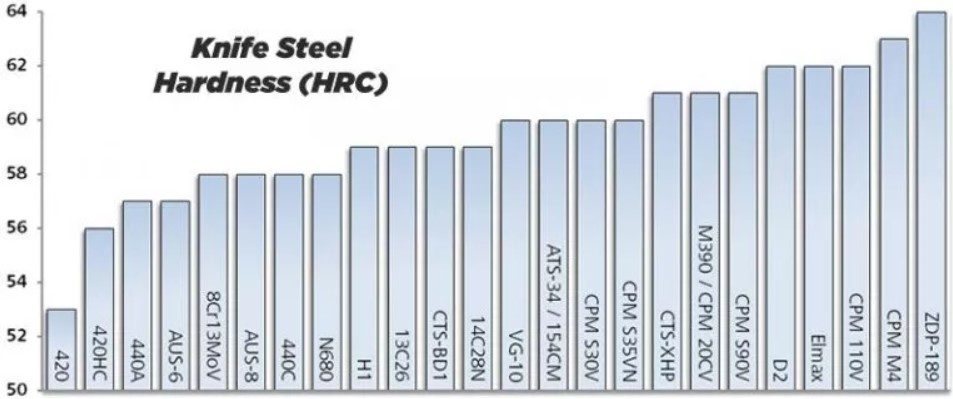
You may come across abbreviations such as HRA, HRB, HRC, etc., depending on the load used to measure hardness.
You may also like: 7 Best Sabatier Knives Reviews
TOUGHNESS
Toughness is the resistance to fractures. This indicator reflects how much energy a metal can absorb before it breaks.
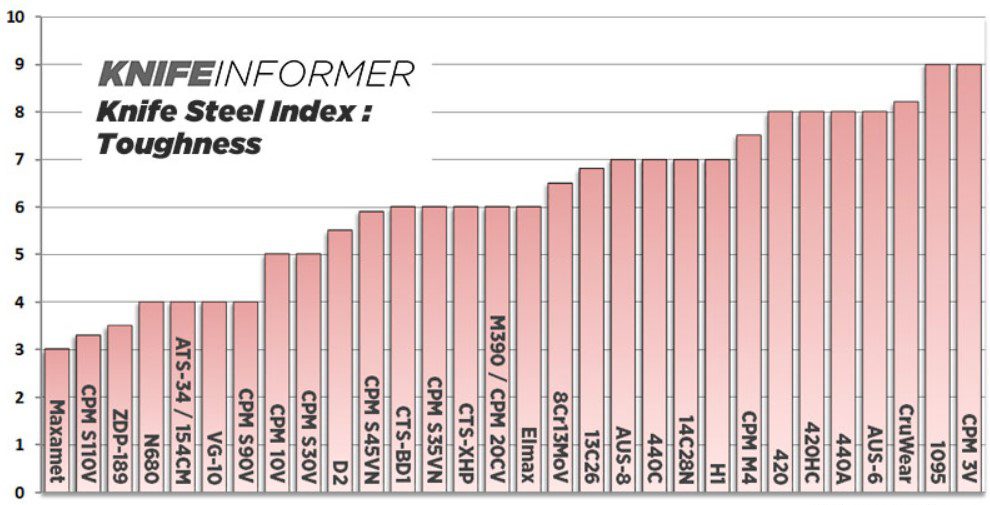
As for the methods used to measure this parameter, there are different scales to do so, such as Izod, Charpy, etc. We can see that there’s less standardization compared to hardness, but we can also say that there’s a certain rule: the higher the indicator of hardness, the lower the one of toughness.
WEAR RESISTANCE
Wear resistance determines how steel resists the damage coming from both adhesive and abrasive wear. Abrasive wear happens when the materials that pass over each other have different levels of hardness: the harder surface leaves scrapes and scratches on the softer one.
Adhesive wear, on the other hand, occurs when parts of one surface attach to the other one and are relocated as the result.
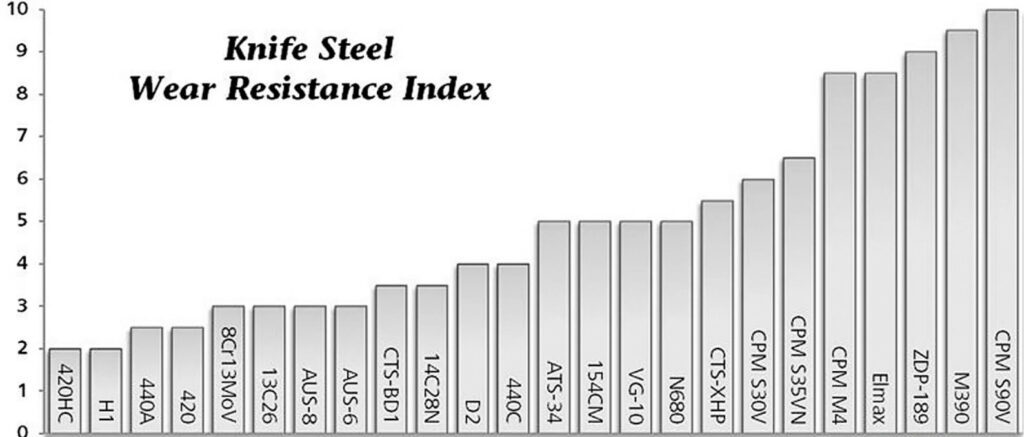
As we can see, how brittle and prone to wear the steel depends on the level of hardness. What’s more, wear resistance is influenced by the chemical contents of the alloy. With an equal level of hardness, there can be more carbides (wear resistance particles) in one alloy than in the other one.
It’s said that the more carbides are in the steel, the more resistant it is. On the other hand, these little particles can decrease toughness.
You may also like: 7 Elegant butter knives for your kitchen
CORROSION RESISTANCE
Another resistance we are going to talk about is corrosion resistance. It is defined as the ability of the alloy to confront corrosion caused by other chemical elements, humidity, salt, and excessive water.
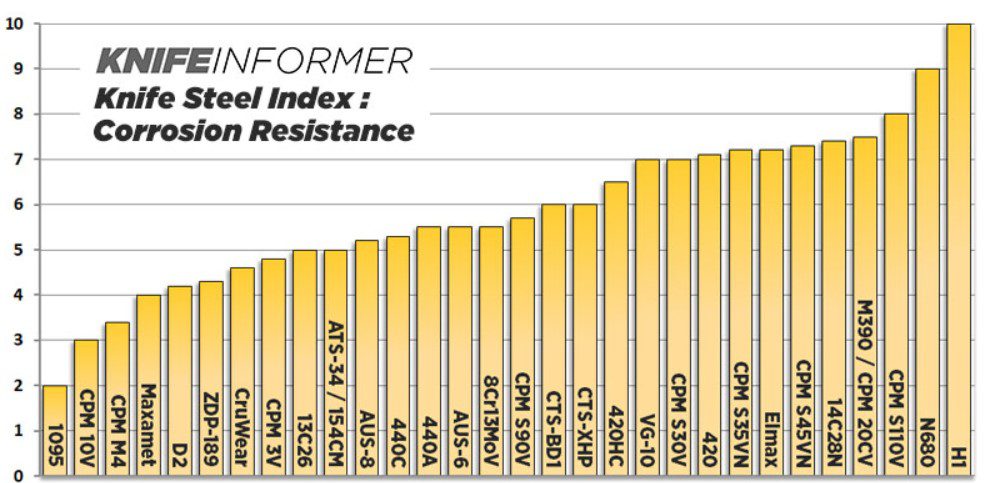
High levels of corrosion resistance are crucial when talking about kitchen knives, on the other hand, overall blade performance and sharpness can be sacrificed to obtain this parameter.
EDGE RETENTION
Edge retention concerns the blade and defines how long the blade is going to retain its performance and sharpness throughout its usage.
Though this is something of high importance and everybody pays attention to it when choosing steel, there are still no standardized methods that could measure retention. The data provided is often biased and we can only intuitively understand what influences edge retention.
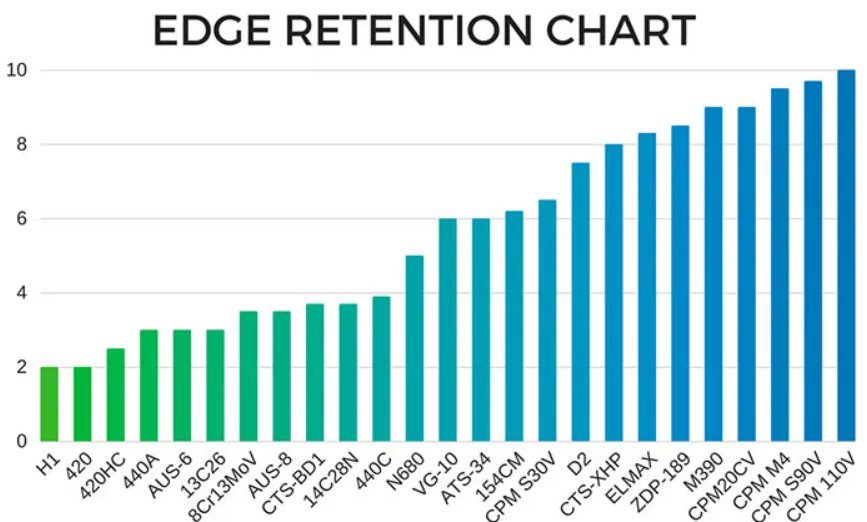
So, we have discussed with you the five most important and widespread factors that are taken into consideration while choosing the best steel for knives. On the other hand, what we shall do now is ask ourselves what the best steel means.
Unfortunately, we have already observed how one dimension increase can cause the other characteristics to fall. As a result, we can say that the best steel is not the one where all these factors reach the highest possible level, but the one presenting the best possible combination of indicators for our usage.
There are several common steel types:
Carbon steel – the accent is put on toughness and wear resistance. The knives made of it stay sharp for relatively a long time and can be re-sharpened easily.
On the other hand, this steel is less resistant to corrosion since the chromium percentage is low. The most common type is 1095.
Stainless steel – almost similar to carbon steel, but it has additional chromium to get corrosion resistance. As a result, the toughness indicators drop down. To be qualified stainless the steel has to contain at least 13% of chromium.
Tool steel – steel with increased hardness used for cutting tool production. The most popular types are O1, D2, CPM 3V, M4, etc.
As we can see, every alloy is a kind of compromise, so the choice depends greatly on what is crucial for you and what you can leave behind. Let’s discuss the most common types of knives and the material used for their manufacturing:
BEST STEEL FOR MACHETES and BOWIE KNIVES
Bowie knives and machetes belong to survival blades used for everyday beating moves. Logically we can assume that these knives have to be resistant to cracks and fractures, so they must be tough enough. On the other hand, hardness is also important.
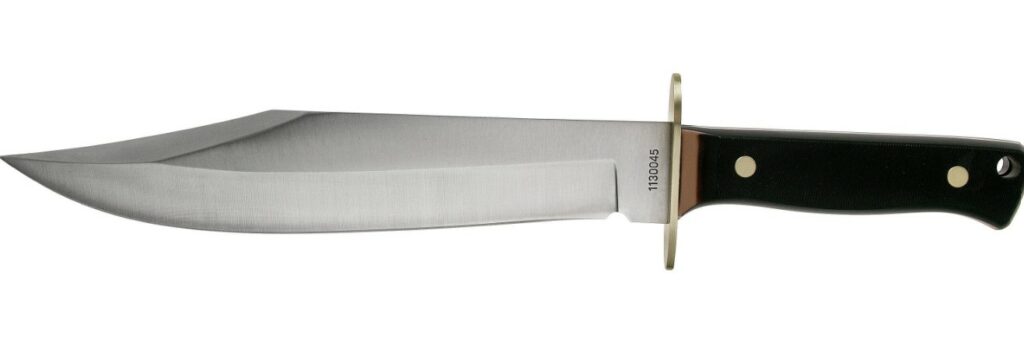
A popular choice for the production of such blades is carbon steel with the percentage of carbon reaching from 0.30% to 0.60%. The knives of this material are usually both hard and tough enough. As for the exact type of steel, C1045 is considered a good match.
BEST KITCHEN KNIVES STEEL
Firstly, it needs to be said that the term ‘stainless steel is a bit confusing since almost all types of steel show signs of decoloration if left to be influenced by elements causing corrosion for a long time. On the other hand, this type of still, if perceived in a more general way, is still the best for kitchen knives.
We have already discussed that cutlery knives are highly exposed to acidic materials and excessive humidity, which makes stainless steel the best choice for their production. The most common choices are 420 and 440 steel, the latter being used for kitchen knives of higher quality.
You may also like: 7 Best Ceramic Knives On The Market
BEST CHEF KNIVES STEEL
Chef knives can technically be defined as kitchen knives, so they are also often made of stainless steel. On the other hand, many chefs prefer using carbon steel knives while working.
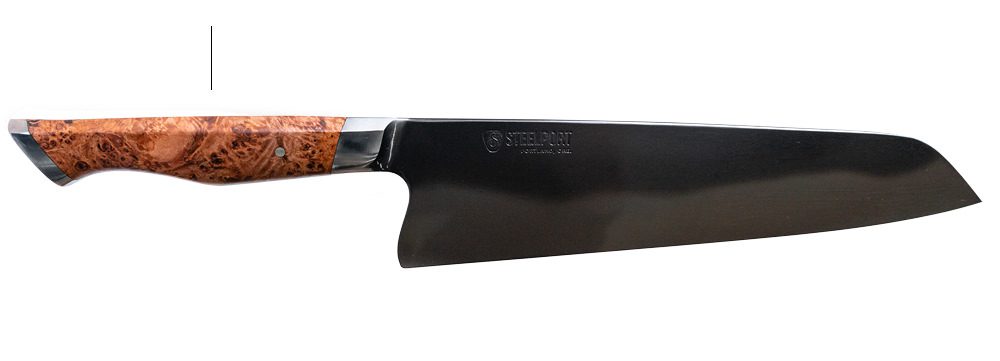
They say these knives are harder and sharper than those made of stainless steel, though not that resistant when it comes to decoloration and corrosion. They require additional care such as frequent oiling to prevent these things.
